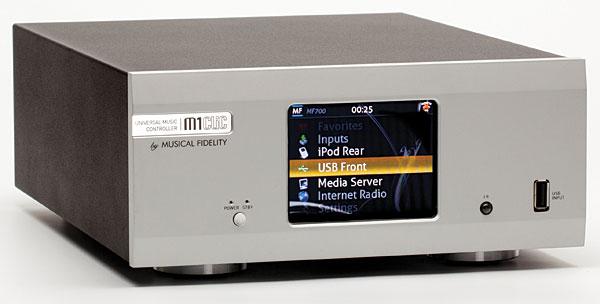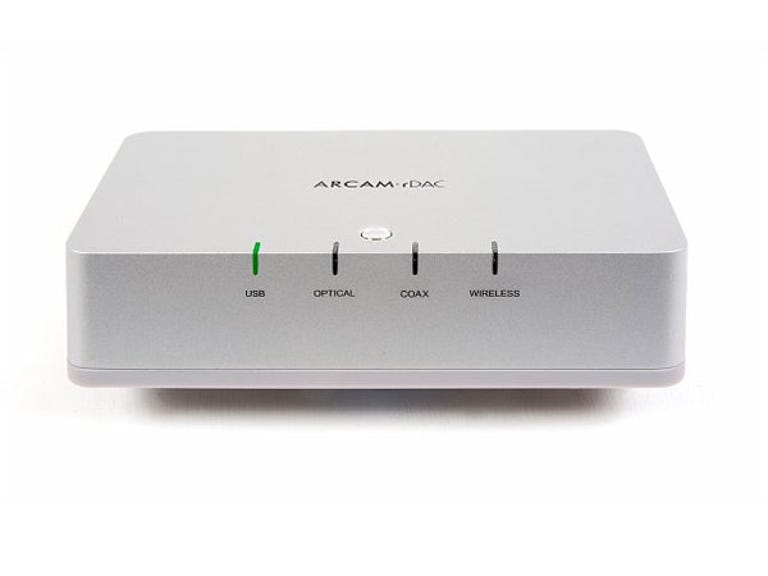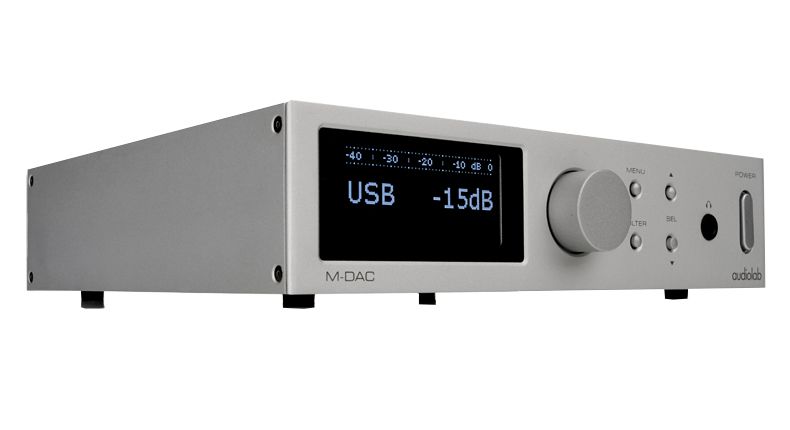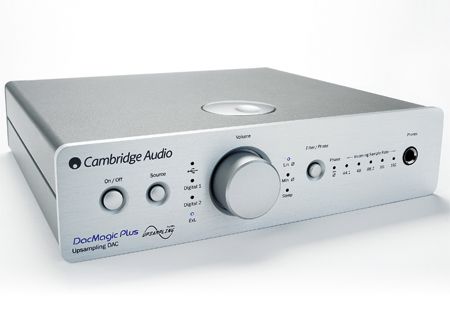The M1 CLiC, which cost £1,239 when it was released in 2011, was an exceedingly amazing piece of equipment at the time. It was described at the time as a preamplifier, DAC, and network music player all in one, and it seemed incredibly adaptable. When you paired it with the matching £599 M1 CDT transport, you got a CD player that could do everything. The front panel is 220x100x300mm and has a 320×240 QVGA high resolution color display, which isn’t quite up to iPhone standards but is clear and nicely sized. There are no buttons, and all twiddling is done with the included remote control.
There are RCA analogue inputs as well as internet radio, network music from a computer, RJ45 network, iPod (through a back socket), USB (via a front socket), and two coaxial digital inputs. It’s one of Musical Fidelity’s more congested rear panels, with a Wi-Fi antenna socket, IEC mains, and a choice of fixed or changeable RCA phono outputs! The design was believed to be heavily influenced by the M1 DAC on the inside, which means it supports a wide range of file formats, including FLAC (up to 24-bit/192kHz), WMA (including lossless), LPCM (24-bit/192kHz), Real Audio, Ogg Vorbis 4.0, and others. There’s a Burr-Brown DSD1796 DAC chip, and power supplies and grounding have been carefully considered.
It’s simple to set up the system and get it working. The CLiC requires the use of its included Wi-Fi antenna and/or an RJ45 network cable from your wireless router. I’d advocate a wired connection if you can; while wireless worked flawlessly, there’s always the risk that extra wireless signals being sent around the room will interfere with the sound in some manner. You inform it what type of connection you’re using using its options menu, and then you provide it the network key if necessary. All of this can be done with the remote control. Then all you have to do is choose your source and go; you might as well enter some internet radio favorites at this point to save time later.
Having heard a lot of the M series Musical Fidelity family, with which the Clic shares a lot of hardware, I can’t say the Clic’s sound was completely unexpected. This combination sounds crisp, even, and open as a CD player. ‘When She Smiles,’ by Plant Life, fit the bill nicely; a sleek, classy-sounding slice of funk with a smooth, lolloping beat, the combination perfectly nailed the mood. The lengthy string glide placed below the drums shimmered behind the smooth beat; the vocals were sugary sweet and expressive, and the acoustic guitar work carried in an appropriately subtle way.
Bass is adequately articulate when connected to a CD player’s digital output, but it’s never as forceful as some rivals; it’s a light, flighty sound that impresses with its great midband and high frequency finesse, rather than an iron fist low down. Vocals are deep and detailed in a way that you wouldn’t expect from a £1,200 CD player of the time. Hi hats exude a delectable delicacy and atmosphere. The CLiC sounded quite similar to when it was number crunching a CD data stream when it was working as a streamer, albeit significantly smoother and more diffuse. A fantastic soundstage was once again set up, complete with gobs of detail and atmosphere, which drew me in and steadfastly maintained my attention. The bass was tuneful and clear, displaying a satisfying counterpoint with the snare and hi-hats. I wouldn’t say the M1 DAC is the best in terms of dynamics, but it’s certainly competent and outstanding at portraying rhythmic and dynamic nuances in a song. Overall, it sounded quite smooth and polished, while still being musically rewarding.
This is from a ‘purple moment’ in the company’s recent history, and it’s still going strong seven years later. Musical Fidelity has made a career out of creating niche products that people adore. What’s not to appreciate about a sound that’s clean, open, and fluid, along with true ease of use and a largely glitch-free performance?







